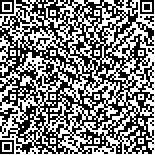赵军,张通,李冰洁,张妍,黄志军.强制性运动治疗脑损伤后上肢运动功能障碍的疗效观察[J].中华物理医学与康复杂志,2006,(11):
扫码阅读全文

|
| 强制性运动治疗脑损伤后上肢运动功能障碍的疗效观察 |
|
| |
| DOI: |
| 中文关键词: 强制性运动疗法 脑卒中 偏瘫 脑损伤 康复 |
| 英文关键词: Constraint-induced movement therapy Stroke Hemiplegia Head injury Rehabilitation |
| 基金项目:国家十五科技攻关资助项目(No.2004BA703B09-02) |
|
| 摘要点击次数: 1046 |
| 全文下载次数: 1437 |
| 中文摘要: |
| 目的探讨强制性运动疗法(CIMT)对亚急性偏瘫患者上肢运动功能障碍的治疗效果,并对比该疗法与传统康复治疗间的疗效差异。 方法将36例偏瘫患者随机分成治疗组及对照组。治疗组患者每天强化训练患侧上肢5 h,每周训练5 d,连续训练3周,同时采用休息位手夹板和吊带限制健侧手的使用,每天8 h。对照组采用传统物理治疗和作业治疗等方法,每天训练患肢5 h,每周训练5 d,治疗期间不限制健侧手的使用。采用运动活动记录表(MAL)、Wolf运动功能实验(WMFT)和Barthel指数作为疗效评测工具,分别于治疗前、治疗后即刻、治疗后1个月和3个月时进行疗效评估。 结果治疗组患者治疗前、后存在明显的组内效应(P<0.01),其疗效持续至随访期;在提高患侧上肢灵活性及上肢使用方面,治疗组与对照组间差异具有统计学意义(P<0.05);治疗组患者在治疗2周时和3周时其疗效差异无统计学意义(P>0.05);2组患者在Barthel指数及WMFT时间得分方面,组间差异均无统计学意义(P>0.05)。 结论CIMT能显著提高亚急性偏瘫患者的上肢运动功能,加强患侧上肢在日常生活中的使用频率,其疗效明显优于传统康复治疗。 |
| 英文摘要: |
| Objective To investigate the therapeutic effects and relative mechanisms when constraint-induced movement therapy (CIMT) is used in patients with upper extremity disorders after head injury, and to compare the effects of CIMT with those of traditional rehabilitation (TR). MethodsThirty-six hemiparesis patients were randomly divided into a CIMT group and a TR group. Patients in the CIMT group were treated with intensive shaping training for 5 h a day for 3 weeks, as well as having their unaffected arms constrained. Meanwhile, the patients in the TR group were treated with traditional rehabilitation with no constraint of their unaffected arms. Motor activity logs (MALs) were compiled, and the Wolf Motor Function Test (WMFT) and Barthel Index (BI) were used to evaluate the therapeutic effects before treatment and at 0 d, 1 month and 3 month after treatment. ResultsCompared with the scores before treatment, the therapeutic effects were significant in the CIMT group, and the effect lasted to the follow-up period. Significant differences were also found between the CIMT group and the TR group in the improvement of dexterity by means of WMFT, and the usage of unaffected upper extremity as recorded in the MAL. There were no significant differences in therapeutic effects between the 2 week and 3 week treatments in the CIMT group. ConclusionCIMT significantly improved upper extremity function and ability in the activities of daily living (ADL) of hemiplegia patients in the subacute period. The effectiveness of CIMT is superior to that of traditional rehabilitation methods. |
|
查看全文
查看/发表评论 下载PDF阅读器 |
| 关闭 |
|
|
|